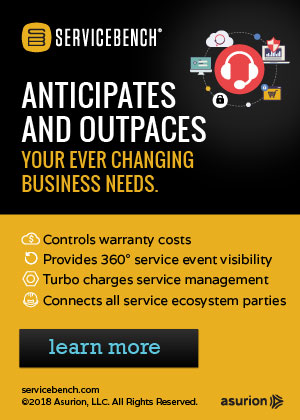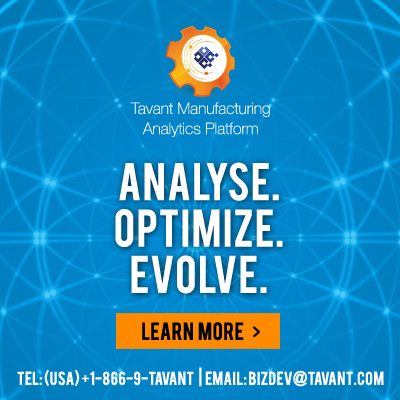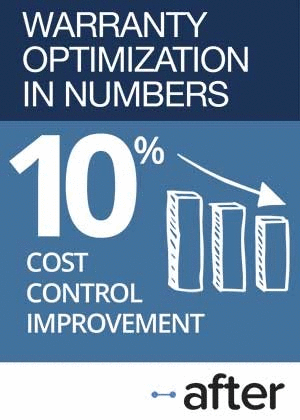Telecom Equipment Warranty Report:As the old guard making landline phone equipment declines, the makers of data communication equipment and smartphones are accounting for an increasing share of the industry's warranty expenses. Still, there's been an overall decline in both the expense totals and the expense rates.
This year, we're including more companies than in past years, widening the definition of what constitutes a telecom equipment manufacturer, and pulling in more manufacturers from the aerospace, consumer electronics, security equipment, and medical equipment industries. So while in 2013 we did a report based on 184 companies and in 2012 based on 170 companies, this year we're tracking 203 companies in total.
Of course, that also means we're double-counting some of the companies previously covered in the Aerospace Warranty Report and others published in the last few months. But it also means we're looking at the most complete list of warranty-providing and U.S.-based manufacturers of telecom equipment that we've put together so far.
Four Industry Subgroups
We took the list of 203 current and former telecom equipment manufacturers and further divided it into four different subgroups. We put 64 of them into a subgroup covering data communications, Internet, local-area networks, and other computer-oriented segments. We put 59 into a subgroup covering landline telephone and mobile phone equipment. Another 48 fit into a subgroup covering broadcast television and cable TV. And then 32 went into a subgroup covering satellite, microwave, and radar technologies.
Just as there was significant crossover with industries such as aerospace and consumer electronics, so too was there plenty of crossover between these four subgroups. Relatively few companies fit into just one subgroup. But we organized them in a "best fit" manner, based on their dominant product lines.
Next we gathered four essential warranty metrics from each company's quarterly and annual financial reports over the past 44 quarters (11 years), covering the period from the beginning of 2003 to the end of 2013. Some such as Valmont Industries Inc. and General Cable Corp. have chosen to skip the quarterly requirement, so we were able to collect only 11 sets of warranty metrics from their annual reports, which we extrapolated over the four quarters of each year.
As in most other industries, there is one great big dominant player in the telecom equipment industry. But unlike in many other industries, the dominant player here gained its title by default.
Cisco Systems Inc. is by far the largest warranty provider left in the industry. But it holds that rank because of the demise or acquisition of other major players such as Nortel Networks Corp., Motorola Inc., Lucent Technologies Inc., Avaya Inc., and 3Com Corp. over the past decade. We'll put that into chart form in Figure 8 below, but first let's look at the four warranty metrics in detail.
Warranty Claims Paid
The first metric is the amount of warranty claims paid by each company during the past 11 calendar years. We insert the word "calendar" there because many telecom equipment companies prefer to end their fiscal years on September 30. In such a case, we would reorganize their fiscal year data into a calendar format, combining the second, third and fourth quarters of one fiscal year and the first quarter of the next fiscal year.
Figure 1 shows the annual sum totals for claims payments by the 203 companies, organized into the four subcategories. As the chart makes clear, datacomm is by far the dominant subgroup, but that's because many of the phone equipment companies fell off the chart.
Figure 1
Warranty in the Telecom Equipment Industry
Claims Paid by U.S.-based Companies
(in US$ millions, 2003-2013)
The total amount of claims paid by all 203 companies topped $1.138 billion, an increase of 9% from 2012 levels. Product sales were up by only 4%, which means that claims are rising faster than sales.
Of that total, more than three-quarters of the claims were paid by the 64 datacomm companies. However, Cisco alone paid almost 60% of the claims all by itself, while the other 63 companies in the datacomm subcategory paid the remaining 15%.
Back in the old days, when Motorola, Lucent and Nortel walked the earth, the datacomm companies paid between a quarter and a third of the entire industry's claims bills. In 2006, for instance, Cisco's share of total industry claims payments was only 18%.
But again, the reason for Cisco's ascendance is primarily the demise of the others. Or to be more precise, some of the others have been acquired by companies that see their warranty expenses as "not meaningful" and therefore not worth reporting. It's not as if Motorola no longer pays claims. But Google Inc. no longer reports them separately from its other liabilities.
And then a much bigger problem is what to do about the ascendance of Apple Inc. Originally a computer manufacturer, it is now dominated by iPhone sales. That would suggest it belongs in the "telephone/mobile" category. However, placing it there would dwarf even Cisco's warranty expenses.
Similarly, now that Hewlett-Packard has acquired 3Com and Palm Inc., perhaps HP should be part of the datacomm subgroup? But if it were, we'd effectively be averaging the expenses of three giant warranty providers: Apple, HP and Cisco, and 202 others.
Warranty Accruals Made
Our second warranty metric is the amount of accruals made. As each manufacturer sells a product, it sets aside a pre-determined amount of money to finance that product's future warranty expenses. The total amount of accruals made each year reflects those planning assumptions.
In Figure 2, the total accruals made by all 203 companies topped $1.225 billion in 2013, up 10% from 2012 levels. Once again, with sales advancing by 4%, this warranty metric grew faster.
And once again, the datacomm subgroup is dominant in 2012 and 2013. But it was second to phone/mobile from 2003 to 2010. And then all the mergers and bankruptcies severely impacted the phone/mobile subcategory, while having little effect on the datacomm totals.
Figure 2
Warranty in the Telecom Equipment Industry
Accruals Made by U.S.-based Companies
(in US$ millions, 2003-2013)
As with Figure 1, for several subcategories there's not enough room in the chart for some of their annual totals. For the record, the phone/mobile segment came in at $78 million in 2013, down an amazing 31% from 2012 (due primarily to the non-reporting of Motorola). The satellite/microwave/radar segment came in at $97 million in 2013, up 10% from 2012 levels.
Warranted Product Sales
Our third metric isn't really a warranty expense at all. Rather, it's the amount of warranted product sales revenue a company reports each quarter. This is the amount of total revenue, minus service revenue, interest, dividends, royalties, sales of consumables, and other products that are sold without a warranty. Basically, it's the selling price of all the products sold with warranties.
By collecting this metric, we are able to compare the amount of claims paid and the amount of accruals made to the amount of money generated by the products sold. Typically, in any industry, the ratio between either claims and sales or accruals and sales is going to be in the range of 1-to-100 to 4-to-100, or 1% to 4%. In the telecom equipment category, the industry's average expense rate tends to be a little above or a little below 1.5% most of the time.
Keep this in mind as we go through the next four charts. The degree to which the subcategory is above or below 1.5% reflects the degree to which those companies and those types of products exceed or trail the industry average.
In Figure 3 we've taken the claims and accrual data from Figures 1 and 2 and divided them by warranted product revenue figures to calculate the expense rates. And it looks something like a valley, with expense rates falling from 2003 to 2008, remaining flat from 2009 to 2011, and then rising in 2012 and again in 2013.
As we mentioned, accruals were up faster than sales industry-wide. In this subcategory alone, sales were up by 2% but claims were up by 11% and accruals were up by 14%. That in turn produced the upward trend seen in Figure 3. Simply put, warranty expenses are rising faster than revenue.
Figure 3
Internet/Datacomm/LAN Equipment Makers
Average Warranty Claims & Accrual Rates
(as a % of product sales, 2003-2013)
Although that sounds like a bad thing, it also can be good. The question that needs to be answered is why expense rates are rising. Is it because the manufacturers are making a less reliable product that costs more to repair or replace? Or is it because the companies are spending more on customer care, larger call centers, more generous warranty terms, longer warranties, etc.?
We've seen a slight upturn in expense rates in several other industries in recent years and nobody's really talking about reduced product reliability. If anything, the increased emphasis on warranty analytics means that products have never been more reliable. So we suspect the rise in expense rates has more to do with a general lowering of the priority given to cost-cutting.
No More Warranty Costs to Cut?
Then again, perhaps there's nothing left to cut? At some point, the call center can't get any smaller and still be able to handle the volume of calls. The product can't be made any more reliable without driving up parts costs or testing costs. And the warranty's terms and conditions can't be enforced any more strictly without driving down customer satisfaction rates, and eventually sales volumes. That's the point the datacomm suppliers seem to have hit from 2009 to 2011.
In Figure 4, we see almost the opposite pattern. For the phone/mobile equipment manufacturers, expense rates rose from 2003 to 2006, and have been falling ever since. In 2013, both their claims and accrual rates hit record lows -- roughly a third of the level they were at during their 2006 peak!
Figure 4
Telephone/Mobile Phone Equipment Makers
Average Warranty Claims & Accrual Rates
(as a % of product sales, 2003-2013)
Looking back at Figures 1 and 2, it's clear that this subcategory of the telecom market is only a mere shadow of what it was a decade ago. Last year, the remaining companies in this subcategory paid only $67 million in claims, down from a peak of $1.454 billion in 2006.
Therefore, what we're probably seeing in Figure 4 is the effect when all the biggest companies such as Nortel, Lucent and Motorola leave the industry and take their huge warranty expenses with them. What they leave behind are lower totals and much lower expense rates from the remaining companies such as Ciena Corp. and Plantronics Inc.
Consistent Group of Companies
The pattern in Figure 5 is much more believable, in the sense that it represents a more or less consistent group of companies, which have managed to cut their expense rates while boosting their revenue. Seven of the top warranty providers in this subcategory in 2013 were also in the top 10 back in 2007. The only newcomers to that top 10 are General Cable Corp., Universal Electronics Inc., and CalAmp Corp., which were much smaller back then.
Because it represents a more consistent group of companies, what we see in Figure 5 is a group that has consistently reduced its warranty expense rates over time. Back in 2003, their warranty expense rates were mostly between 0.7% and 1.0%. For most of 2012 and 2013, their expense rates were near or below 0.4%.
Figure 5
Broadcast/Cable TV Equipment Makers
Average Warranty Claims & Accrual Rates
(as a % of product sales, 2003-2013)
This subgroup also showed strong sales growth last year, Warranted product sales were 14% ahead of 2012 levels, led by a more-than-tripling of revenue by the Arris Group Inc. (which acquired the former General Instrument cable box business unit from Google), and a 23% revenue gain by Infinera Corp., an optical network company.
Highly Variable Expense Rates
In Figure 6, however, what we see is a subgroup that has yet to gain control of its warranty expense rates. Sometimes they're high, and sometimes they're low. From 2003 to 2007 and again from 2011 to 2013 they were mostly in the 1.0% to 1.5% range. In between the group's expense rates rose as high as 2.7%.
Figure 6
Satellite/Microwave/Radar Equipment Makers
Average Warranty Claims & Accrual Rates
(as a % of product sales, 2003-2013)
This is a subgroup that has a huge amount of crossover with the aerospace and defense industries. However, there are numerous commercial manufacturers as well, such as Iridium Communications Inc. in the satellite equipment sector, Cobra Electronics Corp. in the radar sector, and both KVH Industries Inc. and Garmin Ltd. in the navigation sector.
In 2013, their sales were down 2%; their claims were down 3% and their accruals were up 10%. The result is a pair of expense rates somewhat above 2012's levels, and once again above that upper boundary of 1.5%.
Warranty Reserves Held
The fourth warranty metric that we collect is the balance in the warranty reserve fund of each reporting manufacturer. In Figure 7, we've added the calendar year-ending balances of the 203 reporting companies over the past 11 years, and split them into the same four subgroups as before.
At first glance, it would seem to be a declining industry, with reserves falling from $2.06 billion in 2003 to $1.43 billion in 2009 and then to $1.05 billion in 2012. But then it grew a bit from 2012 to 2013. Actually, that somewhat small rise in reserves in 2013 was actually the second-strongest annual increase seen in the past 10 years. But appearances can be deceiving.
Figure 7
Warranty in the Telecom Equipment Industry
Reserves Held by U.S.-based Companies
(in US$ millions, 2003-2013)
Once again, what appears to represent a declining market is instead a chart that chronicles the exit of several of the major telephone and mobile companies. Their reserves didn't disappear. Instead, they were shifted to companies that either don't report (e.g. Google and Motorola) or report as foreign companies (e.g. Alcatel and Lucent).
Furthermore, let's disregard the phone/mobile sector from which we've seen so many departures. In the other three subgroups, warranty reserve balances have remained within a range of around $750 to $950 million for all but two of the last 11 years. So what at least initially looks like a industry-wide decline is actually just a decline in that one subgroup: the traditional landline telephone market.
Warranty Market Shares
The best way to show the effect of all these departures is to follow the "market shares" of the largest telecom equipment companies, past and present. In Figure 8, we've taken the claims data from Figure 1 and set the total for each year to equal 100%.
For instance, in 2012 the entire industry paid $1.04 billion in claims, and therefore each percentage point of "market share" was just over $10 million. Cisco paid $611 million in claims in calendar 2012, so its "market share" was close to 60%.
Back in 2006, the total amount of claims paid was close to $2.2 billion, so each percentage point of "market share" was equal to $22 million. That year, Cisco paid $390 million in claims, so its "market share" was just under 18%.
The thing is, Cisco's "market share" kept climbing in recent years partly because its claims payments kept growing, but primarily because many of its competitors kept disappearing. Lucent left us in 2007 and Avaya followed a year later. Nortel went bankrupt in 2009, and 3Com was acquired in 2010. Then Motorola split itself in two in 2011, but both pieces had ceased reporting their warranty expenses by 2012.
Figure 8
U.S.-based Telecom Equipment Makers
Claims Paid per Year
(as a % share of the totals in Figure 1)
That's an awful high number of exits by major players. And as was mentioned, all but 3Com were counted in the telephone/mobile subgroup. So those departures have had a devastating effect on that subgroup in particular. In fact, Lucent and Avaya were two of the last remaining descendants of the company that started it all: AT&T's Western Electric Co. and the Bell System, which for many years was the monopoly phone company in the U.S. Nortel, one of its top rivals, was itself an offspring of Bell Canada, and they too traced their roots back to the companies founded by Alexander Graham Bell.
Now, the only remaining top telecom equipment manufacturer listed in Figure 8 that represents the phone/mobile subgroup is Ciena Corp. Meanwhile, the rise of the Internet is demonstrated by the fact that half the top 10 warranty providers of 2013 were from the datacomm subgroup, up from only two a decade ago. And that means it's not only Cisco in the top 10. There also are companies such as Netgear Inc., Extreme Networks Inc., and Juniper Networks Inc. that are now in the top 10.
The 80/20 Rule?
But notice how Cisco, with its current 60% share, has roughly the same share as did Cisco, Lucent, Nortel, and both the Motorola spin-offs back in 2003-2011. Those five plus the other 10 companies named on the chart above bring the total "market share" for the majors up to around 80%. And then the remaining 188 companies have the remaining 20% of the "market share". It's not exactly the 80/20 rule, but it's awfully close.
However, keep in mind that none of the mobile handset companies are among the current reporters in these charts. As mentioned, Motorola has been acquired by a non-reporting company. Apple is a reporting company, but it is still listed in the computer category, which we covered in the May 1 newsletter. Nokia, Siemens and Ericsson do report their warranty expenses annually, but all three are based in Europe. Research in Motion is based in Canada. And Samsung, Huawei, HTC, ZTE, LG Group, and Lenovo do not report their warranty expenses at all.
| 
















